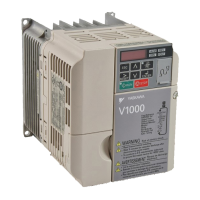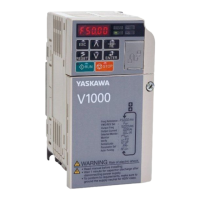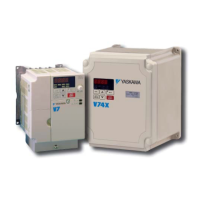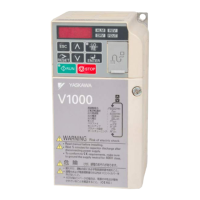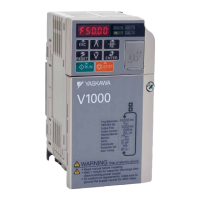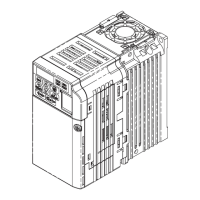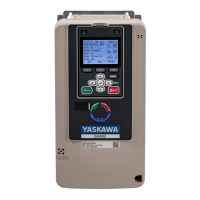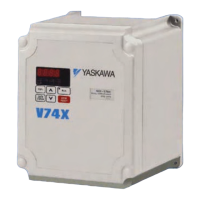Unexpected Noise from Connected Machinery
Cause Possible Solutions
The carrier frequency is at the resonant frequency of the connected
machinery.
Adjust the carrier frequency using parameters C6-02 through C6-05.
The drive output frequency is the same as the resonant frequency of the
connected machinery.
• Adjust the parameters used for the Jump Frequency function (d3-01 through d3-04) to skip the problem-causing bandwidth.
• Place the motor on a rubber pad to reduce vibration.
Note: The drive may have trouble assessing the status of the load due to white noise generated when using Swing PWM (C6-02 = 7 to A, or 7 if set for Normal Duty).
n
Oscillation or Hunting
Cause Possible Solutions
Insufficient tuning in Open Loop Vector Control.
Adjust the following parameters in the order listed to get better gain.
An increase in gain should be followed with an increase in the primary delay time constant.
• C4-02 (Torque Compensation Primary Delay Time)
• n2-01 (Speed Feedback Detection Control [AFR] Time Constant 1)
• C3-02 (Slip Compensation Primary Delay Time)
The response for torque compensation and slip compensation will drop as the time constant is increased.
Auto-Tuning has not yet been performed (required for Open Loop
Vector Control).
Perform Auto-Tuning.
Set motor parameters after calculating the proper values.
Change the motor control method to V/f Control (A1-02 = “0”).
Insufficient tuning in Open Loop Vector Control.
Adjust the following parameters in the order listed to get better gain.
An increase in gain should be followed with an increase in the primary delay time constant.
• C4-02 (Torque Compensation Primary Delay Time)
• n2-02 (AFR Time Constant 1)
• n1-02 (Hunting Prevention Gain Setting)
The response for torque compensation and slip compensation will drop as the time constant is increased.
Gain is too low when using PID control. Check the period of oscillation and adjust P, I, and D settings accordingly.
The frequency reference is assigned to an external source.
• Ensure that noise is not affecting the signal lines.
• Separate main circuit wiring and control circuit wiring.
• Use twisted-pair cables or shielded wiring for the control circuit.
• Increase the analog input time filter constant (H3-13).
The cable between the drive and motor is too long.
• Perform Auto-Tuning.
• Reduce the length of the cable.
n
PID output fault
Cause Possible Solutions
No PID feedback input.
• Check the multi-function analog input terminal settings.
• Set multi-function analog input terminal A1 or A2 for PID feedback (H3-02 or H3-10 = “B”).
• A signal input to the terminal selection for PID feedback is necessary.
• Check the connection of the feedback signal.
• Check the various PID-related parameter settings.
• No PID feedback input to the terminal causes the value detected to be 0, causing a PID fault and the drive to operate at
max frequency.
The level of detection and the target value do not correspond with each
other.
• PID control keeps the difference between target and detection values at 0. Set the input level for the values relative to one
another.
• Use analog input gains H3-03/11 to adjust PID target and feedback signal scaling.
Reverse drive output frequency and speed detection. When output
frequency rises, the sensor detects a speed decrease.
Set PID output for reverse characteristics (b5-09 = “1”).
n
Insufficient Motor Torque
Cause Possible Solutions
Auto-Tuning has not yet been performed (required for OLV Control). Perform Auto-Tuning.
The control mode was changed after performing Auto-Tuning. Perform Auto-Tuning again.
Only Line-to-Line Resistance Auto-Tuning was performed. Perform Rotational Auto-Tuning.
n
Motor Rotates After the Drive Output is Shut Off
Cause Possible Solutions
Low DC Injection Braking and the drive cannot decelerate properly.
• Adjust the DC Injection braking settings.
• Increase the value of b2-02 (DC Injection Braking Current).
• Increase the b2-04 (DC Injection Braking Time at Stop).
n
OV or Speed Loss Occurs When Starting into a Rotating Load
Cause Possible Solutions
The load is already rotating when the drive is trying to start it.
• Stop the motor using DC Injection braking. Restart the motor.
• Increase the value of b2-03 (DC Injection Braking Time at start).
• Enable Speed Search at start (b3-01 = “1”).
•
Set a multi-function input terminal for external Speed Search command (H1-oo=“61” or “62” during restart).
Figure
4.17 on 79.
n
Output Frequency is not as High as Frequency Reference
Cause Possible Solutions
Frequency reference is set within the range of the Jump Frequency.
• Adjust the parameters used for the Jump Frequency function (d3-01 through d3-03).
• Enabling the Jump Frequency prevents the drive from outputting the frequencies specified in the Jump Frequency range.
6.9 Troubleshooting Without Fault Display
252
YASKAWA ELECTRIC SIEP C710606 18A YASKAWA AC Drive – V1000 Technical Manual (Preliminary)

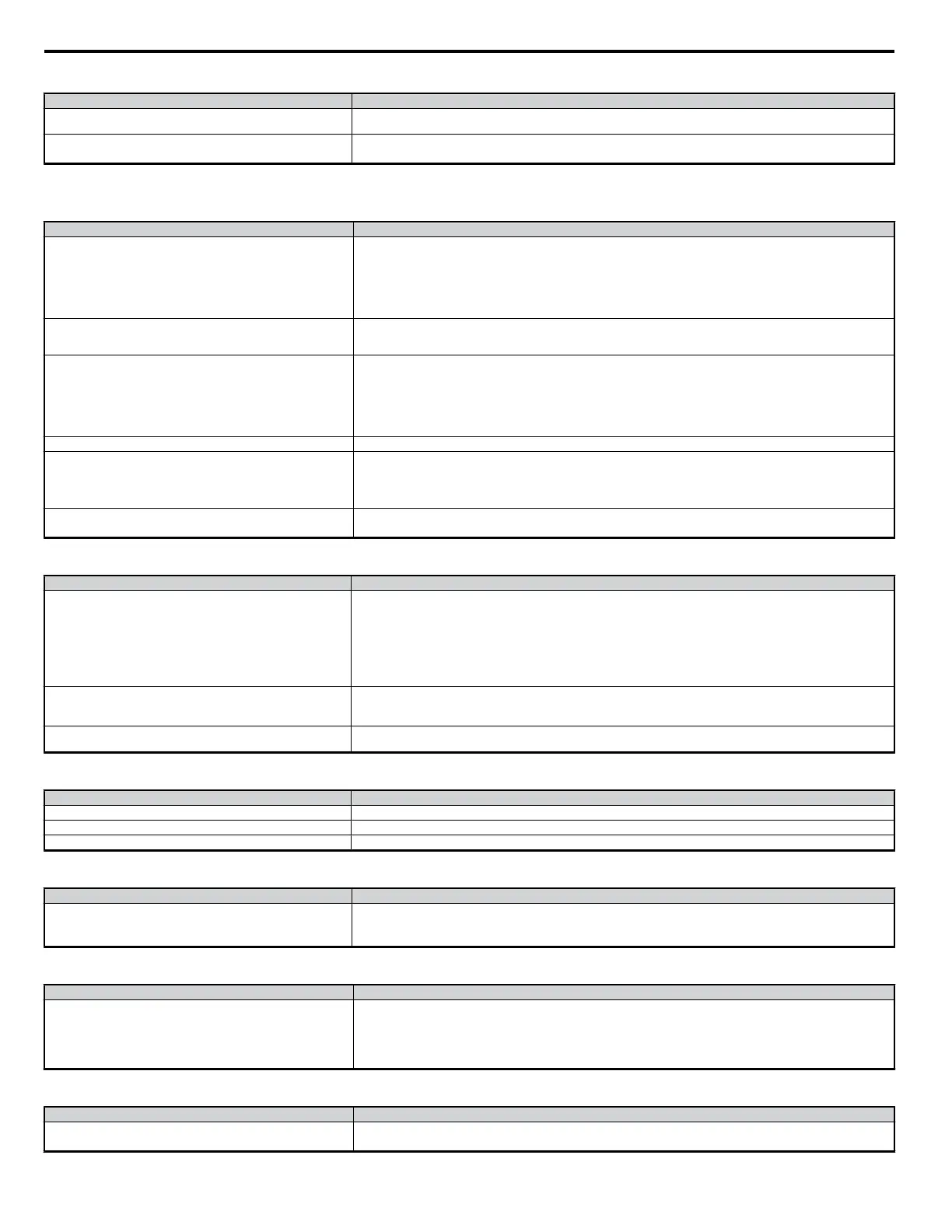